This post covers all aspects of histamine intolerance including its causes, symptoms, list of foods high in histamine, supplements and details of natural treatments to deal with excess of histamine I effectively use in clinic.
Did you know that we can’t really have a histamine free diet like we can have a gluten free diet? Find out why below.
Sleep plays a role in managing histamine intolerance so, as a bonus, I included a FREE download of my Sleep Guide: Top 3 Nutrition tips for better sleep tonight! Key nutrition tips for insomnia plus my top 3 bedtime snacks for deeper and restful sleep.
Lets get started!
Table of contents
- What is histamine intolerance? [1]
- About histamine [2]
- Causes of histamine intolerance [3]
- Symptoms of histamine intolerance [4]
- Foods high in histamine (an overview) [5]
- Natural treatment options for histamine intolerance [6]
- Importance of sleep, rest and stress management in addressing histamine intolerance [8]
- Summary [9]
What is histamine intolerance?
Histamine intolerance is a fairy common but under recognised and not fully understood problem linked with food sensitivities as well as gut and metabolic imbalances.
When a person has problems metabolising and breaking down histamine, its levels build up and lead to worrying symptoms such as hives, rashes and itching, swelling, abdominal pain, insomnia, fatigue and nasal congestion, among others (see more symptoms below).
Thus the symptoms are caused by having too much histamine circulating throughout the body rather than being histamine ‘intolerant’. This is important to realise and address using natural therapies and dietary strategies.
This disorder could be difficult to diagnose as it’s often confused with a number of other conditions that have similar symptoms, especially associated with food intolerances or allergies. In my practice I see this condition periodically, especially in clients with gut disorders, skin problems, headaches or migraines.
Let’s look at histamine intolerance more closely.
About histamine
Histamine is an amine (an organic nitrogen compound) produced by the immune system cells (mast cells, basophils and eosinophils) involved in the inflammatory immune response to an injury or foreign compounds. There is an emerging evidence that histamine producing bacteria in the gut is also a significant source of histamine. More on this below.
The normal inflammatory response [10] is a healing mechanism that increases the permeability of capillaries (small blood vessels) to white blood cells so they can combat the pathogens or toxins present.
Histamine is also a neurotransmitter in the central nervous system (i.e. it relays messages between cells), where it’s involved in many brain functions such as arousal, pituitary hormone secretion, suppression of eating and cognitive functions. So we very much need histamine for the body to function well on many levels.
Histamine is also released in the body as part of an allergic reaction, causing the typical ‘itching, sneezing, wheezing, swelling’ symptoms. Nasal congestion is due to vasodilation (widening of blood vessels) and increased capillary permeability.
Enzyme diamine oxidase (DAO) breaks down histamine and maintains a histamine balance in the body. However, some people have a low level of this enzyme, and when they eat too many histamine-rich foods, they may suffer ‘allergy-like’ symptoms such as hives, headaches, rashes, itching, diarrhoea, vomiting or abdominal pain.
Histidine is also produced by some of the species of bacteria found in the gut. If they proliferate too much due to the gut flora imbalances (also known as gut dysbiosis or SIBO [11] – small intestine bacterial overgrowth) they produce too much histamine and the symptoms appear.
This is one of the reasons why histamine intolerance is on the rise as an effect of alterations to our microbiota (gut flora) over the past 20 years or so, due to the changes to our diet. This includes a significant increase in the consumption of processed and packaged foods that are stored for a long time, use of additives and preservatives as well as pesticides and chemicals.
Causes of histamine intolerance
Overall, there are two main reasons for the symptoms to manifest:
1. Overproduction of histamine caused by:
- Gut dysbiosis/ SIBO (small intestine bacterial overgrowth) – one of the causes of histamine intolerance I see in practice is the imbalanced gut microbiome. Certain types of bacteria in the gut produce histamine and other types of bacteria degrade it maintaining balance. However, if there is more than required of the histamine producing bacteria, histamine excess will occur. Dysbiosis (bacterial imbalances in the gut) reduces histamine degradation [12] AND increases histamine levels.
- Gut dysbiosis [13] can also damage the intestinal lining (villi) responsible for production of enzymes including DAO which degrades histamine.
- Histamine-producing bacteria include: Lactobacillus casei, Lactobacillus delbrueckii, Lactobacillus bulgaricus, Lactobacillus reuteri, and Lactococcus lactis, Enterococcus faecalis, and various types of E. coli.
- Histamine-degrading bacteria include bifidobacteria species, particularly Bifidobacterium infantis, Bifidiobacterium breve, Bifidobacterium infants, Bifidobacterium longum, and also Lactobacillus Plantarum, Lactobacillus rhamnosus, Lactobacillus salivarius, and Lactobacillus gasseri.
- Research on probiotics continues so our knowledge is expending but it’s incomplete for now.
- Over activation of mast cell [14]s [14], which are the cells that largely produce histamine. We don’t fully understand what causes this at present.
2. Inability to break histamine down properly caused by:
- Impaired methylation – histamine N-methyltransferase enzyme (involved in histamine breakdown in the liver) requires methylation [15] to function properly for it to work efficiently. Therefore compromised methylation will cause a decrease in the breakdown of histamine.
- Not enough histamine-degrading bacteria – which is related to gut dysbiosis (as stated above).
- Genetics – genetic defects involving two enzymes: diamine oxidase (DAO) or histamine N-methyltransferase which bind and breakdown histamine preventing excess. Some people don’t make enough of these enzymes because of faulty genes.
3. Many drugs have negative effects on microbiome. Some medications can facilitate histamine release, others can reduce the effectiveness of the DAO enzyme. As a result, the level of histamine rises and may cause symptoms, even in a person who has shown no signs of histamine intolerance in the past. Examples include:
- Some anti-histamines can cause constipation that increases a of developing SIBO (Small Intestine Bacterial Overgrowth).
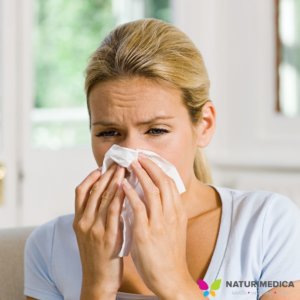
- Common pain killers such as aspirin, non-steroidal anti-inflammatory drugs (NSAIDs) (19), some diuretics, antibiotics and antidepressants are among the medications that can affect the functioning of DAO (2).
- Metformin (diabetes drug) blocks the DAO enzyme and thus can cause histamine intolerance.
- Many other drugs including synthetic estrogen supplementation, some muscle relaxants and local anesthetics.
- Important: you should not stop any medicines without consulting with your doctor. You may be able to take the medication AND manage histamine intolerance through diet and other natural means.
4. Some people with adrenal fatigue who have cortisol [16] production imbalances such as high cortisol, low cortisol or faulty production of cortisol throughout the day, are more likely to produce excess histamine. This is due to increased inflammation which triggers the release of histamine as a defence mechanism. Therefore dealing with adrenal fatigue is an important treatment step as well.
Symptoms of histamine intolerance
- Hives (urticaria)
- Itching [10] (pruritis) – especially of the skin, eyes, ears, and nose
- Tissue swelling (angioedema) especially of facial and oral tissues and sometimes the throat, the latter causing the feeling of “throat tightening”
- Low blood pressure [17] and fainting
- Getting dizzy when standing up quickly
- Rapid heartbeat / heart racing (tachycardia)
- Symptoms resembling anxiety or panic attack [18]
- Chest pain
- Nasal congestion, runny nose, seasonal allergies
- Conjunctivitis – irritated, watery, reddened eyes
- Headaches and migraines
- Fatigue, irritability, insomnia [19]
- Flushing and rosacea
- Blacking out / loss of consciousness for a few seconds unexplained by other causes
- Digestive tract issues especially heartburn (reflux), indigestion, non-gluten gut sensitivity, constipation and diarrhoea
Importantly, if someone has multiple allergic responses that are not associated with any particular trigger food(s) or allergy test results are negative, it could be a problem with histamine intolerance.
Please note that not all of the above symptoms occur in any single individual and the severity of symptoms varies, although the pattern seems to be consistent for each person.
Foods high in histamine (an overview)
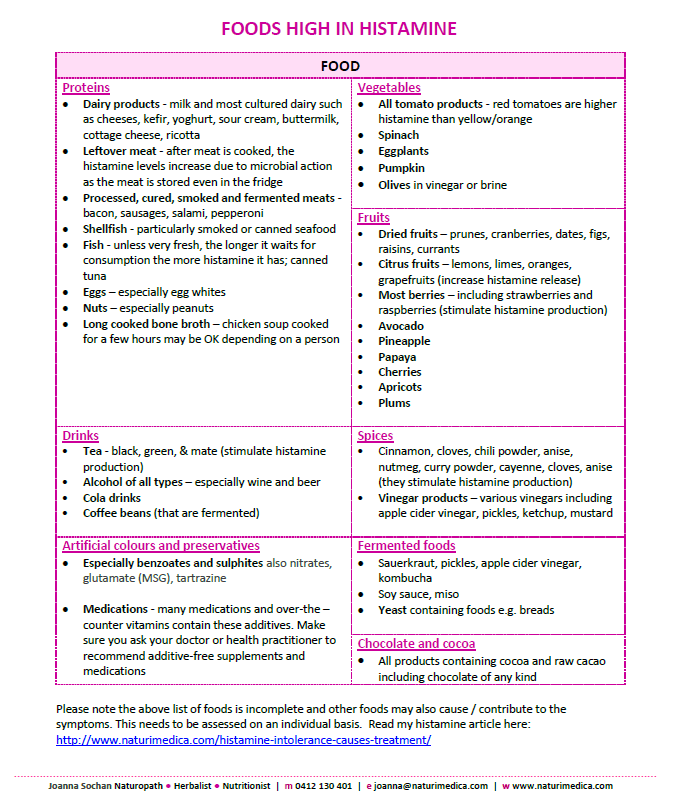
Click here to print the list [20]
Please note the above list of foods is incomplete and other foods may also cause/ contribute to the symptoms. You can find a more comprehensive list of foods high and low in histamine [21].
Another excellent paper on histamine intolerance was published in August 2016 by Research Centers of Nutrition and Health (Grupo CINUSA) [22]in Spain. The researchers conducted selective literature search for relevant publications in PubMed and other scientific data bases, combined with further data from the World Wide Web on histamine and other amines content in foods.
The paper includes comprehensive cross-checked tables of foods that are low, moderate and high in histamine. The researchers concluded that further studies are necessary to establish safety limits for bioactive amines in food, and the intolerance they may cause. A must read for all who have histamine intolerance symptoms.
Natural treatment options for histamine intolerance
- Testing – definitive testing for histamine intolerance has not been established as yet, although guidelines have been proposed. I don’t usually find testing is necessary in a clinical context as the gut and other symptoms, AND a person’s response to the low histamine diet are highly correlated with likely histamine intolerance.
- Healing the gut is the top priority – most people with histamine intolerance have damaged gut lining resulting in a lack of
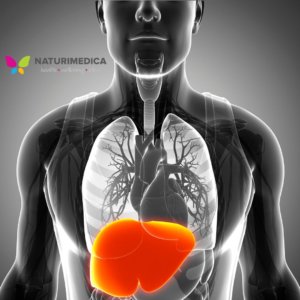 capacity to produce the enzymes that metabolise histamine. In addition, an overgrowth of certain types of bacteria that make histamine from undigested food, leads to a build-up of histamine in the gut, overwhelming the body’s ability to break down the excess histamine. This causes a heightened sensitivity to histamine-containing foods and an increase in symptoms that are commonly associated with allergies. Thus in most cases the underlying cause of histamine intolerance is likely due to existing gut dysbiosis. Therefore rebalancing the gut flora and healing the leaky gut and/or SIBO are the key first step.
capacity to produce the enzymes that metabolise histamine. In addition, an overgrowth of certain types of bacteria that make histamine from undigested food, leads to a build-up of histamine in the gut, overwhelming the body’s ability to break down the excess histamine. This causes a heightened sensitivity to histamine-containing foods and an increase in symptoms that are commonly associated with allergies. Thus in most cases the underlying cause of histamine intolerance is likely due to existing gut dysbiosis. Therefore rebalancing the gut flora and healing the leaky gut and/or SIBO are the key first step. - Secondly, liver function support is of key importance – especially if you seem reacting to almost anything: food, scents, skin products etc. Histamine is also broken down in the liver (by the histamine N-methyltransferase enzyme) so if liver is not functioning well it will impair histamine breakdown. Functional liver tests and/or genetic tests are of value here to get to the root of liver dysfunction.
- Thirdly, good hydration – water regulates histamine secretion and without adequate hydration histamine overload problems are unlikely to resolve. For details on optimal hydration and electrolytes read my posts HERE. [23]
- Addressing methylation problems with testing, supplementation and diet. Testing is required to identify genetic mutations in certain enzymes such as MTHFR gene mutation. Two key variants tested for at present are C677T and A1298C. [24]
- Low histamine diet – a very important part of any natural approach. Adhering to a low-histamine diet for a period of time (or forever for some people) brings fast symptom relief in majority of cases. Sometimes when we start the treatment some particularly sensitive people are not able to tolerate any animal products, and need to follow a plant-based diet to heal the gut and decrease the sensitivity. Fortunately, overtime these individuals will most likely be able to include some animal products in the diet. It’s important to identify specific trigger foods [25]for each individual in order to reduce symptoms rather than indefinitely follow a strict low histamine diet. Low histamine diet leads to increased (improved) DAO levels, likely via its positive effects on the gut.
- Include anti-histamine foods in your diet that decrease inflammation and stabilise mast cells. These include garlic, onions, holy basil, thyme [26], chamomile, peppermint, ginger, turmeric, apples and pomegranates.
- Low FODMAP diet – for a period of time (up to 3 months and review) to heal the gut and reduce symptoms. Find out more about it FODMAP diet here. [27]
- Eating fresh food as much as possible and avoiding consuming leftovers because the levels of histamine increase as the food ages. This practice has been recommended by Ayurveda for a long time. According to Ayurveda left over food has lost its prana, its vital life force, which results in the formation of ama, or toxic undigested material. This substance clogs up the vital channels of the body, disrupting digestion and ultimately giving rise to everything from fatigue to disease. Since food begins losing prana the moment it’s harvested, it is important to create meals using mostly the freshest ingredients and not to overcook them (7).
Fortunately, after addressing the cause(s) of histamine intolerance most people are able to add some of the histamine containing foods back in without any ill effects. - DAO enzyme supplementation to break down excess histamine, if appropriate. DAO enzyme is produced in the lining of the small and large intestines.
- Addressing adrenal fatigue – which is an inflammatory condition. This could be a complex step depending on the level of adrenal exhaustion present. Check out my detailed post on adrenal fatigue here. [28]
- Addressing any inflammatory conditions present for each individual, as these are a great burden for the body to deal with in addition to high histamine, an inflammatory state.
- Supplementation – here is a broad list of natural antihistamines and other helpful nutrients that help to alleviate histamine intolerance. I choose and recommend 2-4 as needed for a particular client.
- Quercetin – a powerful antihistamine and anti-inflammatory natural compound (16)
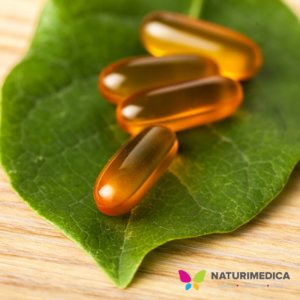
- Bromelain – antihistamine, powerful enzyme, works well with quercetin
- Pine bark extract – antihistamine, antioxidant and anti-inflammatory (14)
- Vitamin C – increases histamine degradation and removal (15)
- Vitamin B6 – increases DAO activity (2)
- Herb Holy Basil [29] – has antihistamine and anti-inflammatory properties (8)
- Magnesium [30]– histamine production increases with Mg deficiency (5)
- Pancreatic enzymes – help break down excess histamine in the gut (2)
- Vitamin E – stabilises mast cells thus decreasing histamine production
- Fish oils [31] – highly anti-inflammatory and immune system supporting
- Probiotics containing histamine reducing or histamine neutral strains including Bifidobacterium infantis, Lactobacillus plantarum or soil-based probiotics which tend to be well tolerated by people with histamine excess.
- Quercetin – a powerful antihistamine and anti-inflammatory natural compound (16)
Book a consultation now to discuss your gut symptoms related to histamine intolerance. [32]
Note on antihistamine medications
Antihistamine drugs can be useful as a “rescue remedy” for occasional use, but used daily as a preventative therapy they have adverse effects. Antihistamines act by blocking sites on body cells that would normally act as receptors for histamine. The receptors act as entry-ways into the cell to allow histamine to carry out its function. Antihistamines stop histamine activity by blocking their entrance.
If this blockage is constant, the immune system sees this as a problem and senses that it must be producing inadequate levels of histamine. It therefore increases its production. Consequently, over the long term, there is even more histamine for the enzymes to breakdown and the problem of histamine intolerance becomes even worse (11).
Importance of sleep, rest and stress management in addressing histamine intolerance
Did you know that sleep is one of the most underrated, simple and easy things you CAN do to improve histamine intolerance and start the recovery?
I always discuss and address sleep issues at the start of any natural treatment, including with clients suffering from various forms of gut imbalances. They need to sleep better to gain more energy needed to initiate the body’s healing processes.
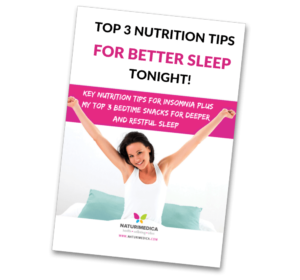
Having seen many fantastic outcomes of improved sleep in my practice, I created a short free ‘better sleep’ guide for my clients. The guide comprises key practical tips based on my clinical experience and research, to give you the most important, common sense steps and actions you can do right now to get sounder and more restful sleep tonight.
This FREE sleep guide, in a form of an eBook, will provide you with the key tips and guidance to improve your sleep.
Download your copy of the FREE Sleep Guide here: Top 3 Nutrition tips for better sleep tonight! Key nutrition tips for insomnia plus my top 3 bedtime snacks for deeper and restful sleep [33]
Summary
All who have histamine intolerance of any kind need to take steps to manage it and bring it back under control by means of specific diet and supplementation.
Most foods contain histamine, so we can’t have a histamine free diet like we can have a gluten free diet.
Optimising the gut function, microbiome composition and digestion are the key pillars to resolving histamine intolerance for good. It may be possible to reverse histamine intolerance through gut repair and rebalancing the microbiome alone, even in sensitive people.
As histamine intolerance is currently a fast growing area of research as well as clinical focus, I’ll be adding updates and tips to this post on a regular basis. Please subscribe to my mailing list to keep up to date – look for the subscription box on the right if you’d like to be notified when updates are added.
If you think you may have histamine intolerance, consider posting a message below or booking an appointment with me to discuss your circumstances. At present I’m able to consult with Australia-based clients only.
To book a consultation, either in person or via Zoom click the button below. I also offer a free 15-minute initial discussion to talk about your circumstances and how I can help.
I look forward to connecting with you and to helping you to feel healthier and happier soon!
Please note that the above material is for informational and educational purposes only and is not intended as a substitute for medical advice, diagnosis, or treatment. Consult with your health practitioner or doctor for advice specific to your circumstances.
Best of Health![]()
Joanna Sochan
Wholistic Health and Lifestyle Therapist
Natural and Lifestyle Therapies for Abundant Health and Wellbeing
References
Maintz L, Novak N. Histamine and histamine intolerance. Am J Clin Nutr 2007;85:1185-1196
Essential Ayurveda: What It Is and What It Can Do for You. http://www.yogajournal.com/article/balance/lifeless-leftovers/ [34]
http://www.histamineintolerance.org.uk/about/the-food-diary/the-food-list [35]
10. Joneja JMV, Carmona Silva C. Outcome of a histamine-restricted diet based on chart audit. Journal of Nutritional and Environmental Medicine 2001;11(4):249-262
11. Joneja JM. Histamine intolerance. It feels like allergy; It looks like allergy; but it’s not an allergy. Foods Matter Newsletter March 2010
http://www.judytsafrirmd.com/histamine-intolerance-gaps-and-low-carb/ [36]
Iravani, S., Zolfaghari, B., PhD, Pharmaceutical and nutraceutical effects of Pinus pinaster bark extract
http://www.ncbi.nlm.nih.gov/pmc/articles/PMC3203267/ [37]
Rock, C.L., PhD, RD; Jacob, R.A., PhD; Bowen, P.E., Phd, RD, Update on the Biological Characteristics of the Antioxidant Micronutrients Vitamin C, Vitamin E, and the Carotenoids
Kang JH, Chang SY, Jang HJ, Cho JM, Kim DB, Lee SS, Ko SH, Park YM, Needs PW, Jo YH, Kim MJ. Quercetin-induced upregulation of human GCLC gene is mediated by cis-regulatory element for early growth response protein-1 (EGR1) in INS-1 beta-cells. J Cell Biochem. 2009 October; http://www.ncbi.nlm.nih.gov/pubmed/19798679 [38]
Tsimmerman, Y. S. “Study of intestinal dysbiosis (“dysbacteriosis”): state of problem and new trends.” Herald of Pancreatic Club 45.4 (2019): 44-53. https://vkp.org.ua/index.php/journal/article/view/177 [39]
Folkerts, Jelle, et al. “Effect of dietary fiber and metabolites on mast cell activation and mast cell-associated diseases.” Frontiers in immunology 9 (2018): 1067. https://www.frontiersin.org/articles/10.3389/fimmu.2018.01067/full [40]
Kakolyri, Maria, et al. “Increased Basal Blood Histamine Levels in Patients with Self-Reported Hypersensitivity to Non-Steroidal Anti-Inflammatory Drugs.” International archives of allergy and immunology (2019): 1-7. https://www.karger.com/Article/Abstract/503968 [41]
Photo credit: Shutterstock
Additional resources
- What is leaky gut? [42]
- Secretory immunoglobulin A (sIgA) for healthy gut, digestion and immunity [43]
- Parasite treatment considerations: Blastocystis hominis and Dientamoeba fragilis [44]
- Adrenal fatigue treatment: The Kalish Method in Australia [45]
- Holy basil – a key herb for stress, anxiety, depression and fatigue [46]
- Top nutrition tips for insomnia and interrupted sleep [47]
Disclaimer: The above material is for informational and educational purposes only. It should not be used to self-diagnose and it is not a substitute for a medical advice, diagnosis, treatment, prescription or recommendation. All viewers of this content, especially those taking prescription or over-the-counter medications, should not make any changes in their health regimen or diet before first consulting a doctor or other qualified health provider with any questions they may have regarding a medical condition or their particular circumstances.

Joanna Sochan is a Natural Therapist and founder of Naturimedica Holistic Wellcare. She has a passion for helping clients transform their lives by becoming healthy and well naturally. Joanna has 12+ years experience in clinical practice and has special interest in solving complex cases, gut health, food sensitivities, hormone imbalances, autoimmune disorders and weight loss. She helps clients individually (mostly online) Australia-wide and also offers online therapeutic programs, eCourses and self-help books. View full bio [48].
